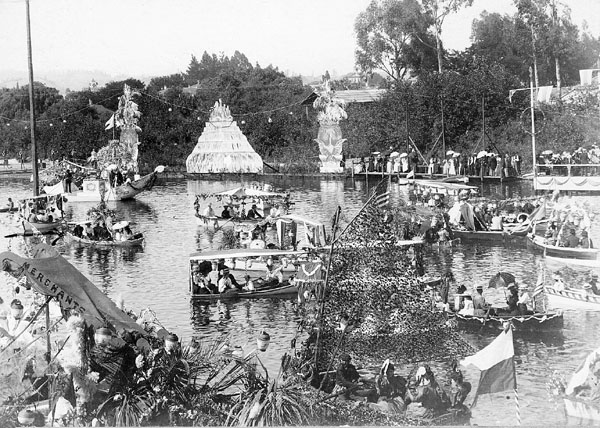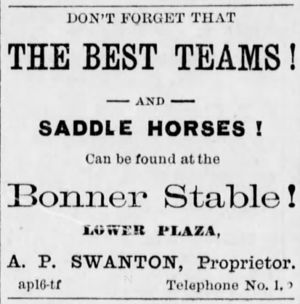History Pages: 53 - Santa Cruz electric system timeline
For a table of contents, see History pages.
As this chronological study of Santa Cruz County history moves into the 1890s, changing technology becomes more and more a part of the story. The “Industrial Revolution” took a while to reach our part of California, but the pace of change in all things electrical accelerated during the last quarter of the 19th century.
Santa Cruz got its first electrical telegraph system in the early 1860s, but its low-power, battery-based technology was too feeble for much else. The generation and use of industrial-scale electricity allowed electric lighting to replace expensive and dangerous gas lights, and allowed electric motors to replace horses in new streetcar systems.
- 1861: Electrical telegraph line reaches Watsonville. The following year, it was extended from Watsonville to Santa Cruz.
- 1884: In October, the Santa Cruz city council enacted a tax to create a $5,000 fund for a municipal electric street lighting system, but it's not clear whether any of the tax money was ever used for the stated purpose.
In December, an electric lighting system was demonstrated at the Fair Pavilion on Bridge Street (see note 1). The demonstration was of an arc-light system invented and developed by the Charles F. Brush Co. The electric resistance "incandescent" lighting invented by Thomas A. Edison eventually won out, except for high-intensity applications like searchlights.
Entrepreneur extraordinaire Fred Swanton was much involved in early electrical projects. Fred's father, A. P. Swanton, was an early livery stable owner and hotelier (see note 2). He was one of the first local promoters of the telephone, and then of electric power. Santa Cruz residents had become impatient with the cost and unreliability of gas lighting, and were ready to try the new technology. The Sentinel ad at left shows that A. P. Swanton's Bonner Stables received "Telephone No. 1." - an early adopter indeed.
- 1889: Fred Swanton and others formed a company to build an electrical power plant in Santa Cruz.
- 1891: The first electric trolleys, powered by a Thomson-Houston dynamo, began to replace the horse-drawn streetcars that had operated since the mid-1870s.
Also in 1891, the expansive new Golden Gate Villa on Beach Hill (see note 3) included electric lighting in its list of modern amenities, setting a new local standard for residential luxury.
At this period, there was intense competition between Edison's direct current generation/transmission (dynamo) and the Westinghouse alternating-current system. No information found yet on whether early Santa Cruz systems were A/C or D/C, and - if D/C - when the switch to today's A/C happened.
- 1895: By mid-decade, enough power was available for Swanton to provide strings of electric lights at the Venetian Water Carnival, which became an annual event on the lower San Lorenzo River (partially dammed for the occasion). The photo at top right looks across the river toward Beach Hill On the river (SCPL historical gallery photo 0154).
- 1896: Fred Swanton's hydroelectric plant on Big Creek sent its first electricity 17 miles to Santa Cruz. The plant continued to operate until 1948, when it was finally abandoned after a forest fire destroyed its flume.
Notes
- Thanks to Researchers Anonymous Facebook page contributor Mike Dalbey for posting information on the first documented demonstration of electric lighting in Santa Cruz.
- See History Pages: 48 - The Rise and Fall of Swanton House: 1883-87
- For more on Golden Gate Villa, see History Pages: 50 - Beach Hill: 1870-99
Next: History Pages: 53 -

